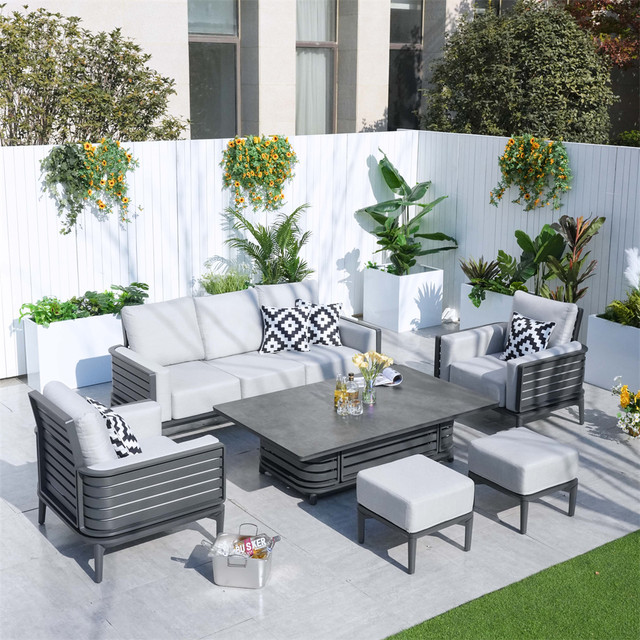1st Mar 2024
Distinguishing Between Aluminum and Wicker Outdoor Furniture
Outdoor furniture comes in various materials, each offering distinct characteristics and aesthetics. Among the popular choices are aluminum and wicker outdoor furniture. While both serve the purpose of furnishing outdoor spaces, they exhibit differences in style, performance, and suitability for different environments.
Style Differences:
Aluminum Outdoor Furniture: Aluminum outdoor furniture is known for its sleek and modern appearance. It often features clean lines, minimalist designs, and a contemporary aesthetic. The material allows for versatility in design, enabling the creation of intricate patterns and innovative shapes. Aluminum furniture complements modern outdoor settings and urban landscapes, adding a touch of sophistication to any outdoor space.
Wicker Outdoor Furniture: Wicker outdoor furniture exudes a more traditional and rustic charm. Wicker, typically made from natural materials such as rattan, bamboo, or synthetic fibers, offers a warm and inviting appeal. Wicker furniture often features intricate weaving patterns, curved lines, and a classic look. It complements outdoor settings with a cozy and relaxed atmosphere, such as gardens, patios, and porches.
Performance Differences:
Aluminum Outdoor Furniture: Aluminum outdoor furniture is prized for its durability and low maintenance. It is resistant to rust, corrosion, and fading, making it suitable for various climates and weather conditions. Aluminum furniture is lightweight yet sturdy, making it easy to move around and rearrange. It requires minimal upkeep and can withstand exposure to sunlight, rain, and moisture without deteriorating.
Wicker Outdoor Furniture: Wicker outdoor furniture offers natural beauty and charm but requires more maintenance compared to aluminum. Natural wicker is susceptible to damage from moisture, humidity, and prolonged exposure to sunlight. However, synthetic wicker materials are available, offering increased durability and resistance to weather elements. Despite this, wicker furniture may require occasional cleaning and protective treatments to maintain its appearance and longevity.

Suitability for Different Environments:
Aluminum Outdoor Furniture: Aluminum outdoor furniture is well-suited for a variety of outdoor environments, including coastal areas, urban landscapes, and contemporary outdoor spaces. Its sleek and modern design complements modern architecture and minimalist aesthetics. Aluminum furniture is ideal for areas with high humidity, salt air, and harsh weather conditions due to its corrosion-resistant properties.
Wicker Outdoor Furniture: Wicker outdoor furniture is best suited for more sheltered outdoor environments, such as covered patios, screened porches, and sunrooms. While synthetic wicker can withstand outdoor exposure better than natural wicker, it still benefits from protection against direct sunlight and moisture. Wicker furniture enhances outdoor spaces with a cozy and inviting atmosphere, perfect for relaxing and enjoying leisure time.
In conclusion, both aluminum and wicker outdoor furniture offer unique characteristics and appeal to different tastes and preferences. Understanding the distinctions between these materials can help you make informed decisions when selecting outdoor furniture that suits your style, performance requirements, and environmental conditions. Whether you prefer the sleek sophistication of aluminum or the timeless charm of wicker, there's a perfect outdoor furniture option to enhance your outdoor living experience.






